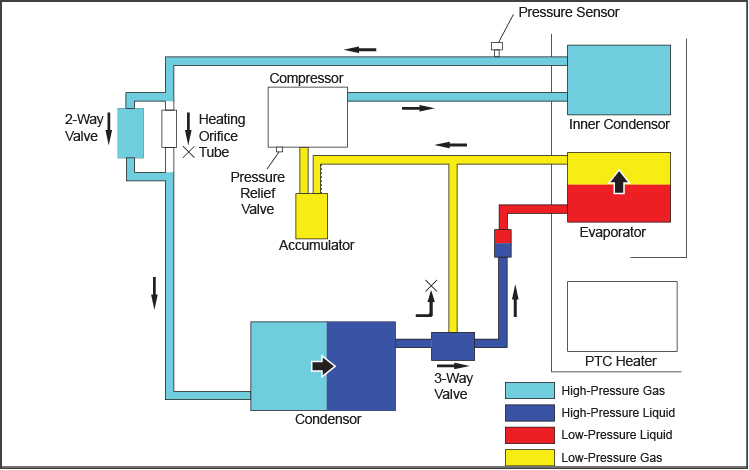I believe what we are seeing here confirms that the waste heat from the drive unit can heat the battery pack, but not the cabin, as posted above.Tesla seems to think it helps...

In "cooling" mode the Cabin loop is "closed" (via valves 157 & 159) and coupled to the refrigerant loop via heat exchanger (133). The Pack loop is also coupled to the refrigerant loop in this mode. The Drive unit loop is isolated.
In "heating" mode, valves 157 & 159 put the Drive Unit loop in series with the heat exchanger via line 151 and pump 149. The cabin radiator (153) is now isolated, with no coolant flow through it. Any heat delivered to the cabin is via the electric PTC heater (161). The warm coolant from the drive unit only exchanges heat to the pack via the heat exchanger (133) at this point.
In other words, when the drive unit loop is switched "in" to the heat exchanger loop, the cabin radiator is switched "out".
Now, I do admit that 153 is labeled "H/C RADIATOR", which I assume stands for heating & cooling, so I could be wrong here. But I think this is from a patent, and not necessarily what was exactly implemented. The reason for this is that the diagnostic screens we deiscussed in the Thermal Management thread differ in that they don't show the cabin receiving drive unit heat. Those who have seem them animated in real time agree that the flow never shows that.





